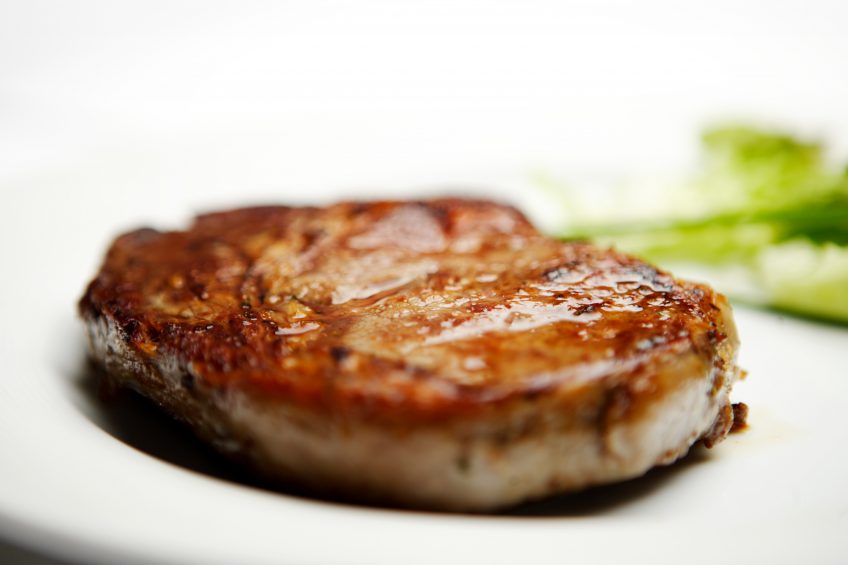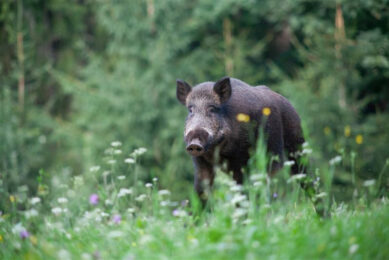Improving meat quality and carcass characteristics

Especially in European markets, a high lean meat percentage is what is most valued. Nevertheless, the ongoing production growth in the last decades has mainly focused on improving feed efficiency and meat production. How is it possible to improve meat quality?
Phytogenic feed additives comprise a wide range of plants, like herbs, spices and other plant-derived products like essential oils and oleoresins. The functions and effects of essential oils and can be summarised under three headings, as follows:
1. Improvement of feed characteristics: palatability, ingredients oxidation, antimicrobials;
2. Improvement of digestion and performance: digestibility, retarded gastric emptying, stabilisation of intestinal microbiota, higher enzymatic activity, protection of intestinal mucosa, etc.;
3. Improved characteristics of animal products. Of particular importance is the improved oxidative stability of the carcass, meat and fat and the egg yolk.
When focusing on the role of phytogenic feed additives on carcass characteristics and meat quality the attention must be paid on the one hand, to the positive effect of phytogenic feed additives on protein deposition resulting in carcasses with higher lean meat percentage and on the other, the reduction of lipid oxidation resulting in improved meat quality.
Carcass characteristics
Phytogenic feed additives may influence muscle growth by activation of intracellular signalling pathways involved in protein synthesis such as the insulin metabolism. Several phytogenics have been shown to stimulate insulin secretion, to increase insulin sensitivity or to improve the activity of proteins involved in the intracellular insulin signalling cascade.
An upregulation of these functions activates the expression of genes resulting in related to enhanced protein synthesis and cell proliferation while inhibiting apoptosis. Eventually this may result in higher tissue growth of the animal. The addition of herbal extract mixture (sage, nettle, lemon balm and coneflower) and different oils showed a numerical increase on daily growth (ADG) by 4% and Feed Conversion Ratio (FCR) by 6% while lean meat and loin eye area was increased by 2% and 5%, respectively, whereas back fat thickness was reduced by 4%.
Meat quality
Apart from microbial spoilage, lipid oxidation is the primary process causing quality loss in meat products. Lipid oxidation in muscle or fat is initiated in the highly unsaturated phospholipid fraction of subcellular biomembranes.
Products of lipid oxidation, such lipid hydroperoxides and aldehydes, negatively affect texture, colour, flavour, nutritive value and safety of meat products. Thus, antioxidants have been utilised for many years to prevent or reduce this process, with synthetic ones (butylated hydroxytoluene, butylated hydroxyanisole) being the most common. However, these antioxidants are discussed to cause or promote negative health effects. In June 2017, the European Food Safety Authority (EFSA) suspended ethoxyquin, from the authorised list, one of the most common used in feed antioxidant. This action pushes the search and development for safe and natural solutions.
Vitamin E (α-tocopherol) is generally regarded as an acceptable supplement in animal diets and is a highly effective lipid-soluble chain-breaking antioxidant. Moreover, many plant extracts and essential oils (phenolic and non-phenolic substances) are known for their antioxidative properties. Such substances contribute to the protection of feed lipids from oxidative damage, partly substituting the use of α-tocopherol acetate and related compounds as feed additives or preservatives. Essential oils may also affect lipid metabolism in the animal: dietary supply of thyme oil or thymol showed a beneficial effect on the antioxidative enzymes superoxide dismutase (SOD) and glutathione peroxidase (GPx), as well as on polyunsaturated fatty acid composition in various tissues.
Figure 1 – Changes in carcass composition with use of selected blend of essential oils and saponins* (% difference).

In 2015, a study showed that supplementation of finishing pigs diets with phytogenics can increase the total antioxidant capacity (T-AOC) and glutathione peroxidase (GPx) activity in muscle which indicates an improved antioxidative capacity. Moreover, malonaldehyde (MDA) content in muscle decreased as the result of dietary supplementation of phytogenic feed additives, which may indicate a decreased lipid peroxidation because MDA is a secondary product of lipid oxidation, and therefore may indirectly indicate an increased antioxidative capacity.
The improved antioxidant status of the pork muscle can improve meat quality. Meat shear forces, drip loss and cook loss were improved by the supplementation of phytogenic feed additives. These parameters represent the meat tenderness and indicate improved meat quality.
In another study from 2014, it was shown that supplementation of grower-finisher diets with phytogenic feed additives had a significant reduction of carcass and meat oxidation and improved the sensorial properties compared to control. Antioxidant enzyme activity (GPx and glutathione reductase) in the longissimus lumborum were higher, whereas the lipid oxidation was lower in the group receiving phytogenic feed additives. Meat from pigs with this improved antioxidative status received higher scores for colour and sensory evaluation.
Effect on carcass composition
Aromex Pro is Delacon’s phytogenic feed additive, specially designed for the needs of growing finishing pigs. The selected active substances, essential oils and blend of saponins, improve nutrient digestion and utilisation. A digestibility and nitrogen balanced trial performed at the Free University of Berlin, Germany with growing pigs demonstrated an increase of 3.7% on ileal protein digestibility (76 vs 79%, p<0.05) and 8.8% nitrogen retention. the more efficient nitrogen utilisation and deposition was confirmed in a latest trial performed at the agricultural research institute irta in spain. it was shown that supplementing growing finishing diets with this particular feed additive changes carcass composition (see>Figure 1), increases protein and moisture deposition while reducing fat.
Figure 2 – Improvement on loin (longissimus dorsi) area in live animals (body weight 68 kg) and carcasses at slaughter (live body weight 110 kg).
A computerised tomography (CT) scan on live animals during the growing and finishing phase and carcass at slaughter showed a significant increase on loin (longissimus dorsi) area (see Figure 2). Loin area at slaughter (110 kg live weight) was increased by 7.2% for the tested product.
Increasing consumer demand
Today, there is an increasing consumer demand for high quality, tasty and safe meat products. However, the use of improved pig genetics for higher growth rate and lean meat percentage has led to deterioration pig meat quality. Certain nutrients and feed additives have shown profound impact on meat quality and specifically those of natural origin such essential oils and other plants extracts have attracted the attention for use in pig nutrition.
Phytogenics showed positive effects on feed efficiency, protein (muscle) deposition and reducing fat oxidation, resulting in improved performance and meat quality. Phytogenic feed additives are an effective natural solution with high acceptance by consumers for their safeness and compliance with environmental sustainability.
References are available on request.












